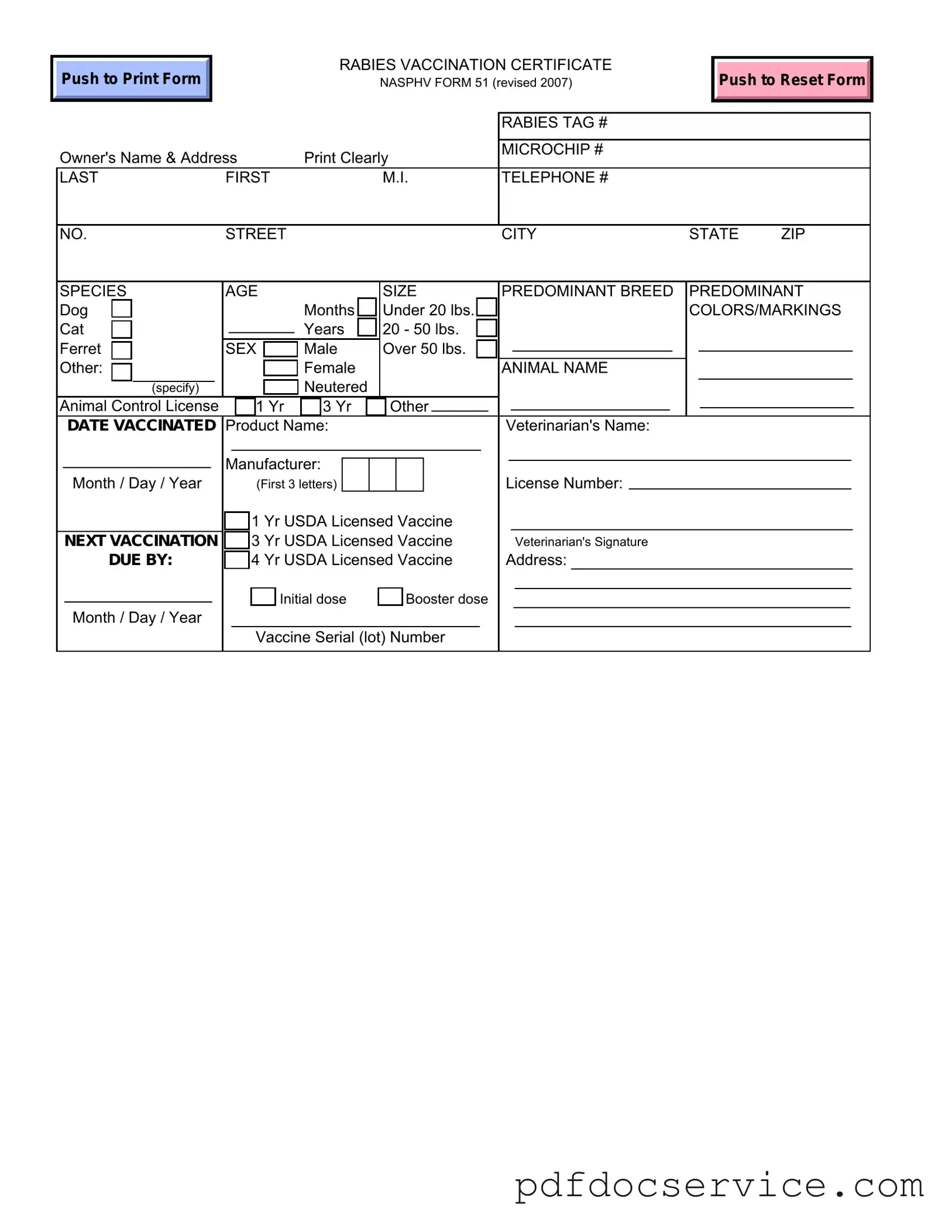What is a Rabies Certificate?
A Rabies Certificate is an official document that verifies that a pet has been vaccinated against rabies. This certificate includes important details about the vaccination, such as the date it was administered, the vaccine used, and the veterinarian who performed the vaccination. It is often required for pet travel, boarding, or licensing.
Who needs a Rabies Certificate?
Any pet that is required to be vaccinated against rabies needs a Rabies Certificate. This typically includes dogs, cats, and ferrets. Many states and local jurisdictions have laws mandating rabies vaccinations for pets, especially if they will be in contact with other animals or people.
The Rabies Certificate must include the following information:
-
Owner's name and address
-
Pet's species, age, size, and predominant breed
-
Microchip number, if applicable
-
Date of vaccination
-
Vaccine product name and manufacturer
-
Veterinarian's name and license number
-
Next vaccination due date
-
Veterinarian's signature
How long is a Rabies Certificate valid?
The validity of a Rabies Certificate depends on the type of vaccine used. There are typically one-year and three-year vaccines available. If a pet receives a one-year vaccine, the certificate is valid for one year. If a three-year vaccine is administered, the certificate remains valid for three years. Always check local regulations, as some areas may have specific requirements.
What should I do if I lose my Rabies Certificate?
If a Rabies Certificate is lost, the pet owner should contact the veterinarian who administered the vaccine. The veterinarian's office can often provide a replacement certificate. It is important to have this document on hand for licensing, travel, or other situations where proof of vaccination is needed.
Can I use a Rabies Certificate from another state?
In many cases, a Rabies Certificate from another state is acceptable, but it is essential to check local laws and regulations. Some jurisdictions may have specific requirements regarding the format or information included on the certificate. Always verify with local authorities if you plan to move or travel with your pet.
To fill out the Rabies Certificate form, you will need to provide clear and accurate information. Include the owner's name, address, and contact details. Specify the pet's details, such as species, age, size, and breed. After the veterinarian administers the vaccine, they will complete the remaining sections, including the vaccination date and product information. Ensure that the veterinarian signs the certificate before it is considered valid.
